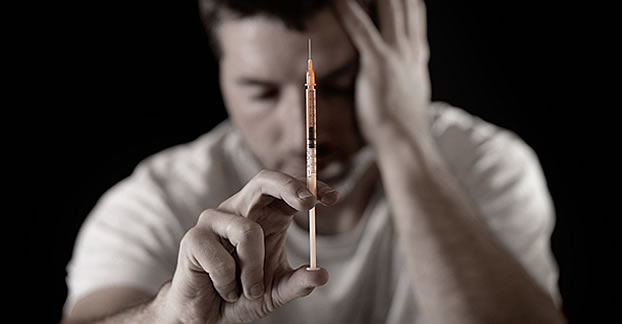Browse This Article
There’s a straight line between the overprescribing of opioid painkillers and the devastating crisis of heroin addiction in the US.
It’s been called “the worst public health crisis in decades. ”The crisis is an epidemic of heroin addiction in the US. But it started with prescription opioid painkillers. There’s a straight line starting with the rise of opioid use, through the addiction to these (legal) drugs, to the explosion of heroin addiction and overdose deaths, say experts.
It’s a problem receiving notice from law enforcement officials around the country, frustrated by the devastation of heroin abuse in their jurisdictions, as well as from the highest levels of government.
“We know that 80% … of heroin use in our communities stems from legitimately prescribed medication that was prescribed from a legal source. And we can’t continue that trend.” says Chief Leonard Campanello of the Gloucester, MA, police department (see video). President Obama’s proposed 2017 budget includes $1 billion in new mandatory funding over 2 years, earmarked for the expansion of treatment and other programs for prescription drug abuse and heroin use. And the Surgeon General, Vivek Murthy, MD, recently announced the first-ever Surgeon General’s report on substance abuse, addiction and health, to be published later this year.
Today, opioid and heroin drug overdose is the leading cause of accidental death in the United States, according to the American Society of Addiction Medicine. Their stats show that the overdose rate in 2008 was nearly four times the 1999 rate. As a result, women’s deaths from overdosing on prescription pain relievers increased more than 400% from 1999 to 2010 and 237% in men in the same time period.
How did this happen? Three steps show a devastating link from good-faith efforts to manage pain to the epidemic.
Step 1: Mistaken belief that opioid painkillers are not addictive
Because doctors historically knew how addictive opioids could be, prescriptions were typically limited to end of life pain relief from cancer through most of the 20th century. In 1986, however, a doctor at New York’s Memorial Sloan-Kettering Cancer Center named Russell Portenoy published a paper stating that opioid drugs could be used for pain relief in patients without cancer. Later, as a pain specialist at Beth Israel Medical Center, he told The New York Times, “there is a growing literature showing that these drugs can be used for a long time, with few side effects and that addiction and abuse are not a problem.”
Adequately treating pain became a priority, and pharmaceutical companies responded: in 1996, Purdue Pharma introduced OxyContin, an extended-release version of oxycodone. Other companies released their own versions of opioid-based painkiller drugs.
Step 2: Overprescribing of opioids ramps up

By the late 1990s, the idea that all pain must be treated became popular. The American Pain Foundation and the American Pain Society pushed to establish pain as “the fifth vital sign,” along with blood pressure, temperature, heartbeat and breathing. In 2001, hospitals introduced a 10-point pain scale, asking patients to describe their amount of pain to their healthcare providers.
Interestingly, a portion of these efforts were funded by pharmaceutical companies such as Purdue Pharmaceuticals, which paid for a guide about pain control that was published by the Joint Commission, the nonprofit that accredits US hospitals.
In 2010, sales of prescription pain relievers were four times those in 1999, according to the American Society of Addiction Medicine (pdf). Leana S. Wen, MD, the Baltimore City Health Commissioner, and a leading proponent against opioid painkillers abuse, overprescribing, and overdoses, attributes the rise to several factors, starting with aggressive marketing of these drugs over the last decade.
Fifteen years ago, I did not learn about the danger of opioids while in training. We never thought about the danger these drugs could have.” — Dr. Leana Wen
Overprescribing, says Dr. Wen, reflects a possible lack of understanding of how easily people can become addicted. To prevent overdoses, she says, “doctors and patients [have to] understand that opioids are not a first-line drug — they should try ibuprofen or Tylenol first. There are many non-prescription options.”
Plus, she says, “we have to change our society’s lack of tolerance that pain is normal. You don’t need to take a pill to take away every problem that you have.” She also stresses that knowledge about opioid addiction should become a more prominent part of medical training and practice.
“Fifteen years ago, I did not learn about the danger of opioids (and other addictive drugs, like benzodiazepines) while in training,” says Dr. Wen. “We never thought about the danger these drugs could have.”
But the dangers were becoming obvious. Opioid prescriptions rose from around 76 million in 1991 to nearly 207 million in 2013. 259 million prescriptions were written for opioids in 2012, which amounted to more than a bottle of pills for every American adult.
Perhaps inevitably, this led to an increase of physicians noticing drug-seeking behavior from patients, who came to emergency rooms complaining of unbearable pain and requesting drugs by name. Certain physicians became known for freely prescribing pain medication. In 2002, Florida physician James Graves was found guilty of manslaughter after four of his patients died from Oxycontin overdoses. He had been the state’s top Oxycontin prescriber; a story in the Los Angeles Times describes his office parking lot as a tailgate party. He was sentenced to nearly 63 years in prison.
Step 3: Cheap heroin is the same high as expensive opioids

Pharmaceutical opioids work by making more dopamine — a neurotransmitter that brings intense feelings of pleasure — in the brain. And this is where heroin comes in. This street drug does the same thing, far more cheaply and without a doctor’s approval, or prescription pad.
Indeed, according to the American Society of Addiction Medicine (pdf), 4 in 5 new heroin users started out by misusing prescription painkillers, and as a consequence, the rate of heroin overdose deaths nearly quadrupled from 0.4 deaths per 100,000 women in 2000 to 1.2 deaths per 100,000 women in 2013. In a 2014 survey, 94% of respondents treated for opioid addiction said they turned to heroin because prescription opioids were “far more expensive and harder to obtain” than heroin.
Fixing the Problem with Opioid Painkillers
In March, the CDC released national guidelines for primary care physicians prescribing opioids for chronic pain that is not related to cancer, end-of-life care or palliative care related to serious illness. They include 12 recommendations, such as trying non-opioid medications first, establishing treatment goals, discussing known risks of opioid use with patients before prescribing, using short-acting opioids instead of long-acting opioids, the importance of follow-up visits to assess the effectiveness of the treatment, learning about the patient’s history with opioids through urine testing, asking about overdose experience or high amounts of previous opioid use, and seeing if the patient appears in a state prescription drug monitoring program to see if he or she is getting opioids from other sources.
At the same time, President Obama announced that physicians will be allowed to treat more patients with buprenorphine, a controversial opioid-based drug that is less addictive than stronger opioids like oxycodone and heroin and used to help people break their opioid addictions.
As of fall 2016, more than 60 medical schools will implement curriculum that will allow med students to learn about “responsible opioid prescribing,” according to StatNews. These efforts are the latest from the White House, which in 2015 issued statements that detailed federal, state, local, and private-sector efforts to help reduce opioid overuse and addiction. These include increasing opioid training for healthcare providers, awareness campaign, and drug programs that can help prevent opioid overdosing or reduce opioid addiction.
Dr. Wen has made fighting opioid abuse one of her top priorities. She has established a citywide effort to educate prescribers about and prescribe naloxone — a drug that can help stop an opioid overdose as it is happening — in conjunction with opioid prescriptions. She has also joined with more than 40 state and health officials urging the FDA to put black box warnings on the labels of opioids and benzodiazepines to show that taking both drugs together can be fatal.
“This is my number 1 issue,” said Wen. “There are more deaths from drugs than from homicides and we are helping to set national best standards for how to treat this problem.”







